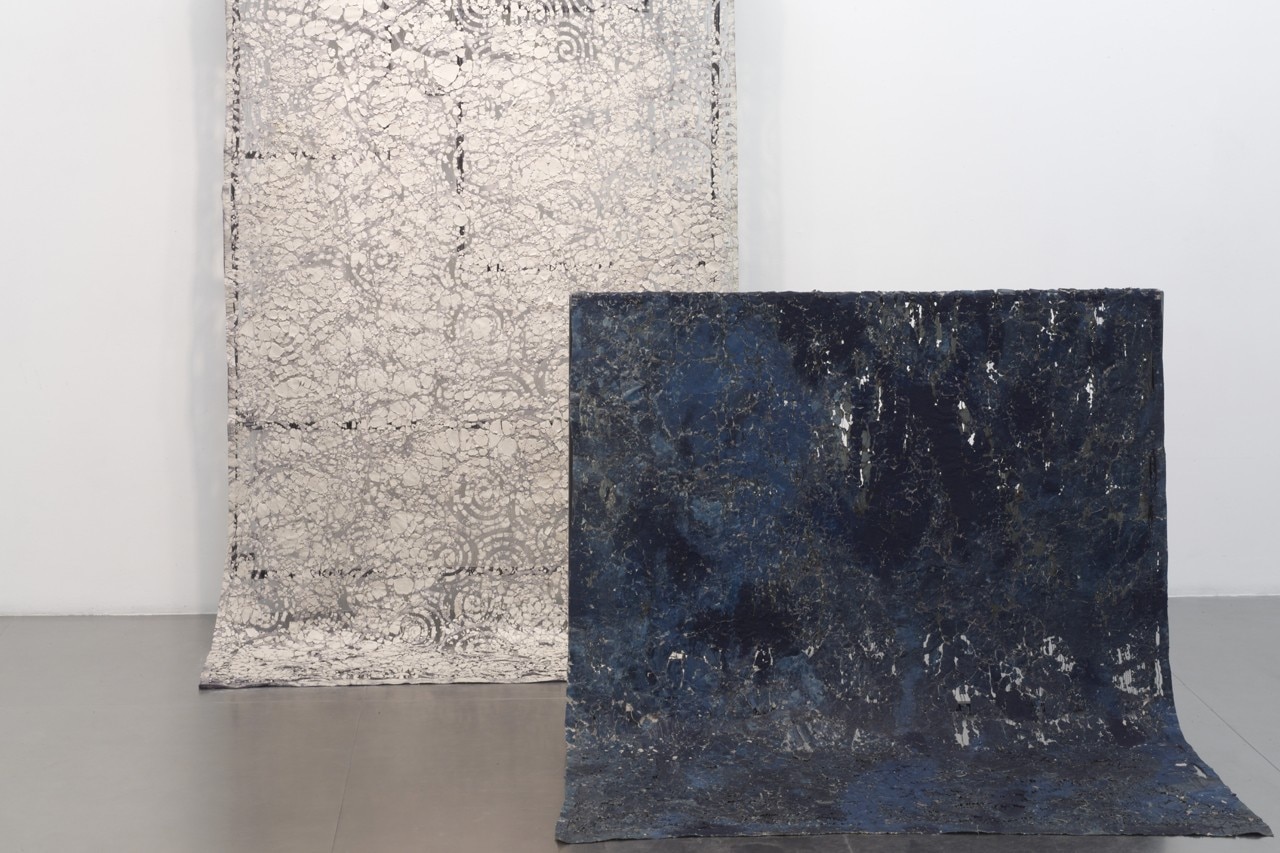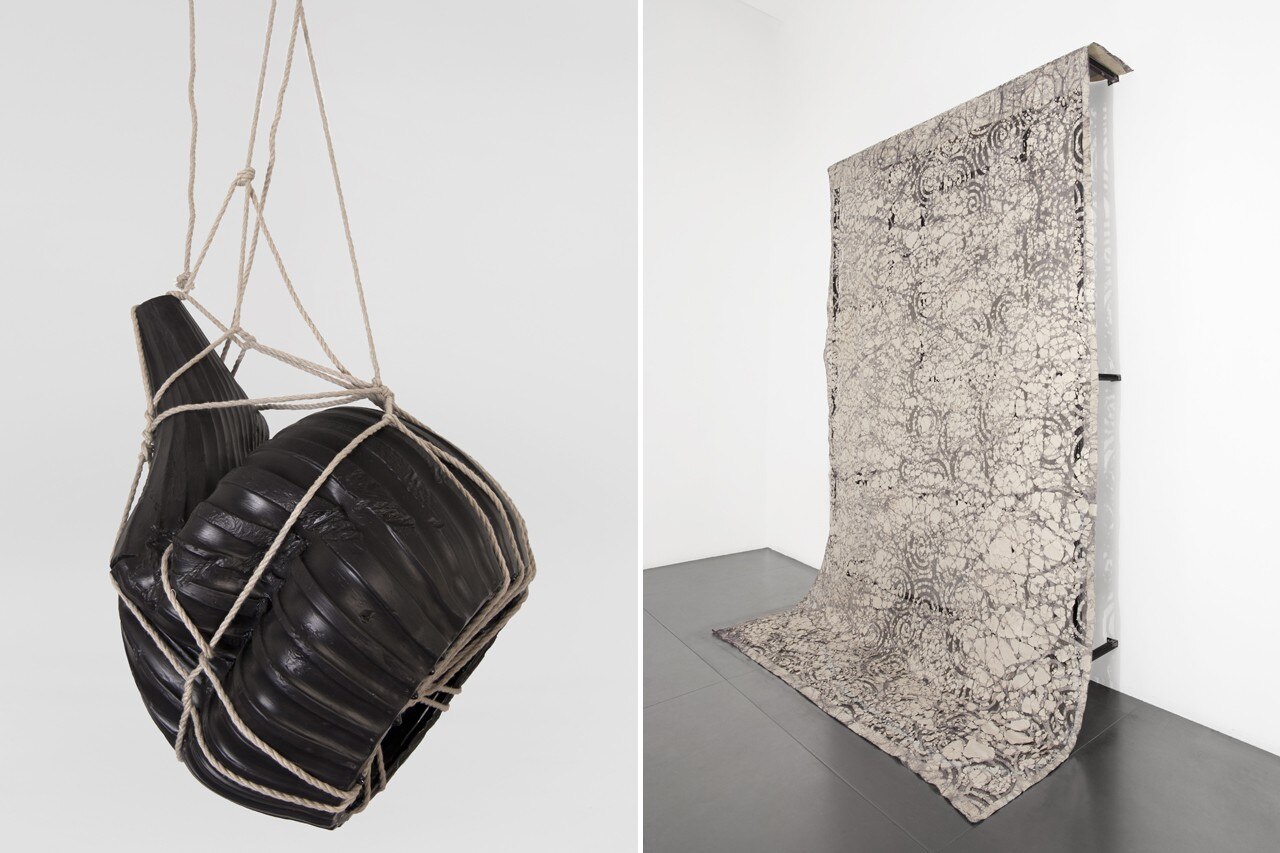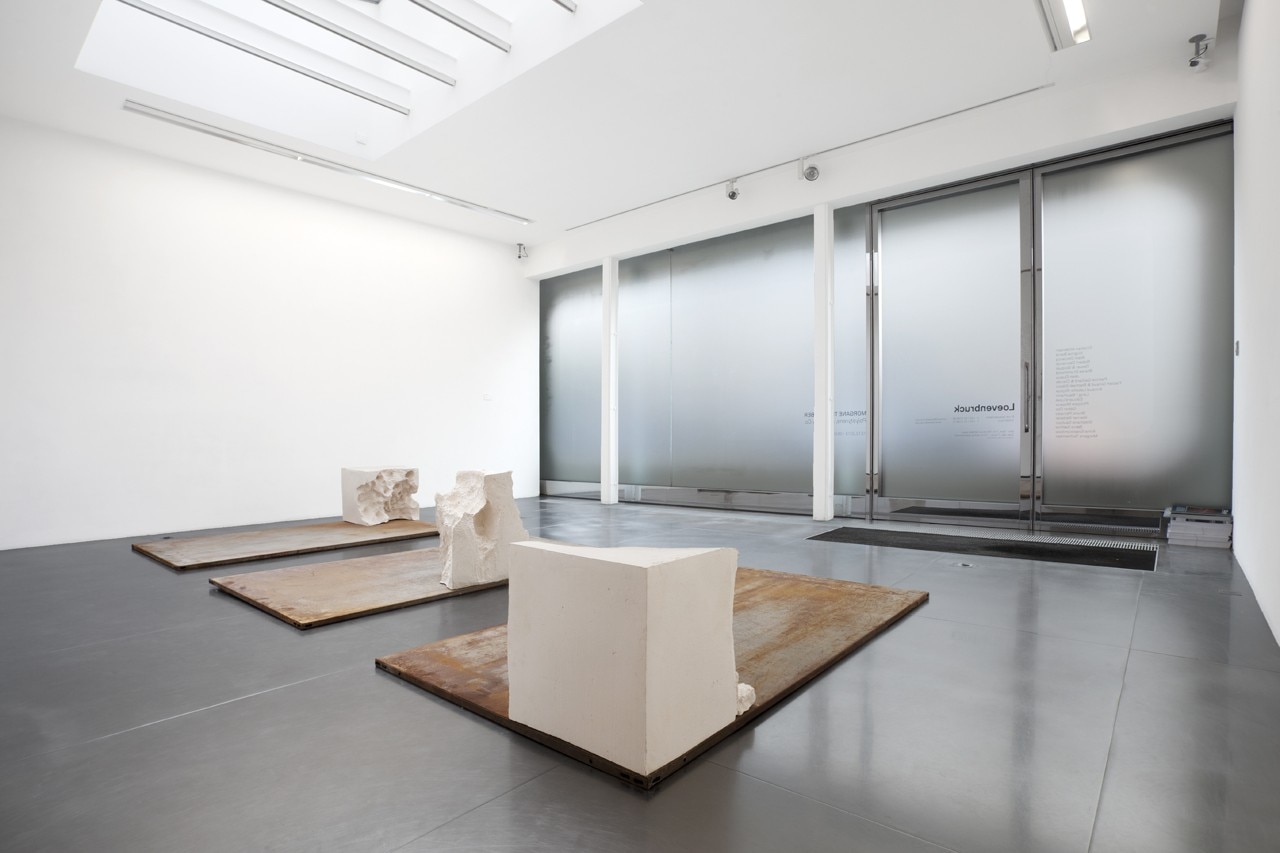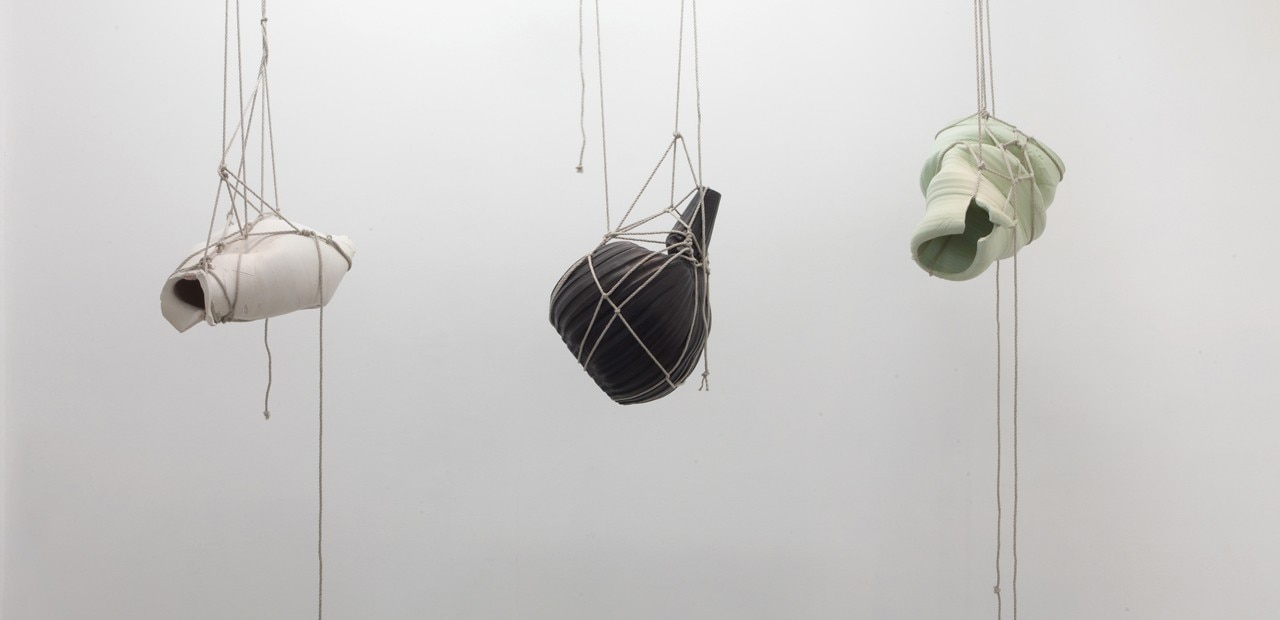On the left: Morgane Tschiember, Shibari, 2013, Ceramic enamelled in matt white and linen rope; Variable high x 22 1/2 x 15 3/4 in. Photo Fabrice Gousset © Adagp, Paris. On the right: Morgane Tschiember, Shibari, 2013, Ceramic, mint green slip, blue glass enamel and linen rope; variable high x 18 1/2 x 11 3/4 in. Photo Fabrice Gousset © Adagp, Paris






